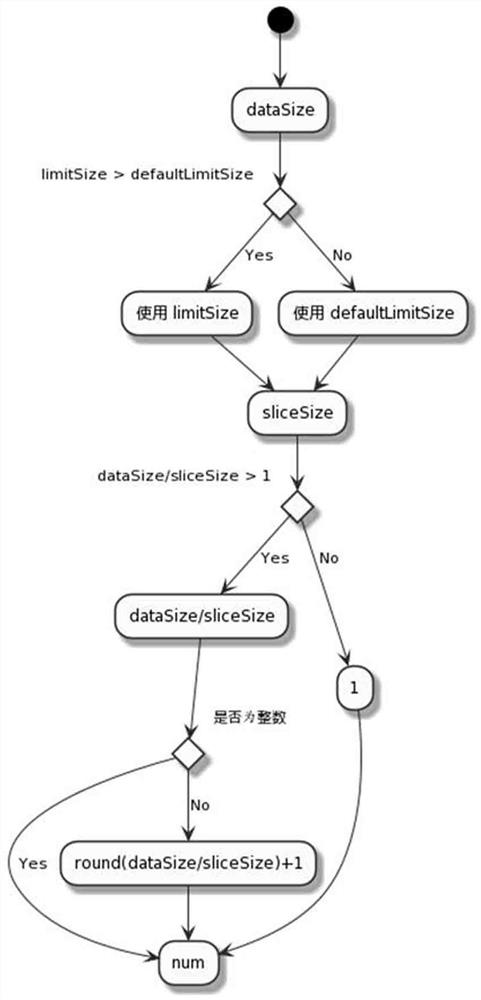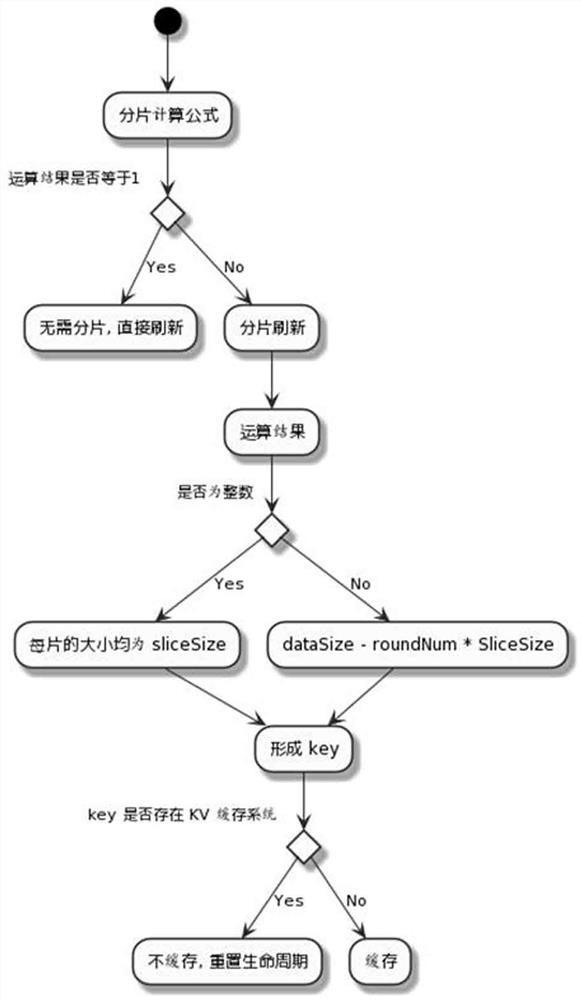Efficient CDN fragment refreshing method
An efficient and fragmented technology, applied in electrical components, transmission systems, etc., can solve the problems of huge total request volume, long total time consumption, and increased system pressure, so as to improve throughput, reduce average time consumption, and improve overall performance Effect
- Summary
- Abstract
- Description
- Claims
- Application Information
AI Technical Summary
Problems solved by technology
Method used
Image
Examples
Embodiment 1
[0049] Embodiment 1: As shown in Figure 1, this embodiment includes a slice calculation formula module and a KV cache system. When the refresh request is sent, the CDN system will request the origin site to obtain the latest resource of the original URL, and then send the resource to the shard calculation formula module to calculate the shard of the resource. Finally, the latest resources are cached in the KV cache system according to the results of the sharding calculation formula.
Embodiment 2
[0050] Example 2: See figure 2 , the calculation method of the shard calculation formula in Embodiment 1, comprising the following steps:
[0051] 1. Determine the size dataSize of the resource according to the attribute of the resource;
[0052] 2. If limitSize is carried in the header of the refresh request and limitSize is greater than defaultSize, use limitSize as the slice size sliceSize, otherwise use defaultSize as the slice size sliceSize;
[0053] 3. If middleNum, the quotient of dataSize divided by sliceSize, is equal to 1, it means that the resources are too small to be sliced;
[0054] 4. If the quotient middleNum of dataSize divided by sliceSize is greater than 1, there are two cases:
[0055] a. The quotient middleNum is an integer, then the quotient is the resource slice number sliceNum;
[0056] b. If the quotient middleNum is a decimal, add 1 to the integer part roundNum of the quotient middleNum as the number of resource fragments.
Embodiment 3
[0057] Example 3: If image 3 As shown, storing in the cache system includes the following steps:
[0058] 1. According to whether the operation result of the shard calculation formula is equal to 1, there are two cases:
[0059] 1) The result of the operation is equal to 1, the resource is too small and can be refreshed directly without sharding;
[0060] 2) If the operation result is greater than 1, it can be divided into two cases according to whether the operation result is an integer:
[0061] a) The operation result is an integer, and the size of each slice is sliceSize;
[0062] b) The operation result is a decimal, the size of the last slice is: dataSize – roundNum *SliceSize, and the size of the remaining slices is sliceSize;
[0063] 2. Generate the corresponding hash value as the etag of the fragment according to the content of the fragment;
[0064] 3. Each fragment uses "original URL + fragment etag + fragment ID" as the key value and the fragment resource as ...
PUM
 Login to View More
Login to View More Abstract
Description
Claims
Application Information
 Login to View More
Login to View More - R&D
- Intellectual Property
- Life Sciences
- Materials
- Tech Scout
- Unparalleled Data Quality
- Higher Quality Content
- 60% Fewer Hallucinations
Browse by: Latest US Patents, China's latest patents, Technical Efficacy Thesaurus, Application Domain, Technology Topic, Popular Technical Reports.
© 2025 PatSnap. All rights reserved.Legal|Privacy policy|Modern Slavery Act Transparency Statement|Sitemap|About US| Contact US: help@patsnap.com



